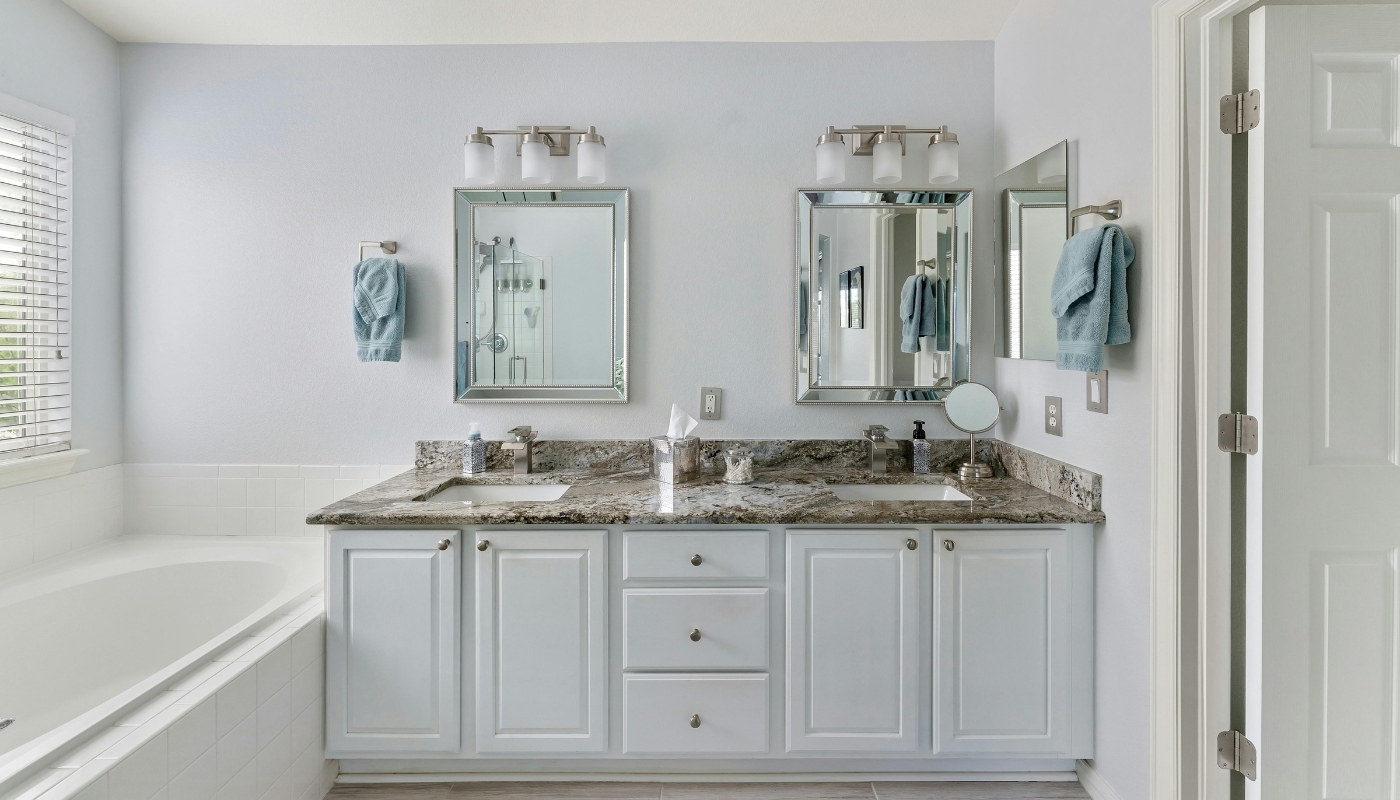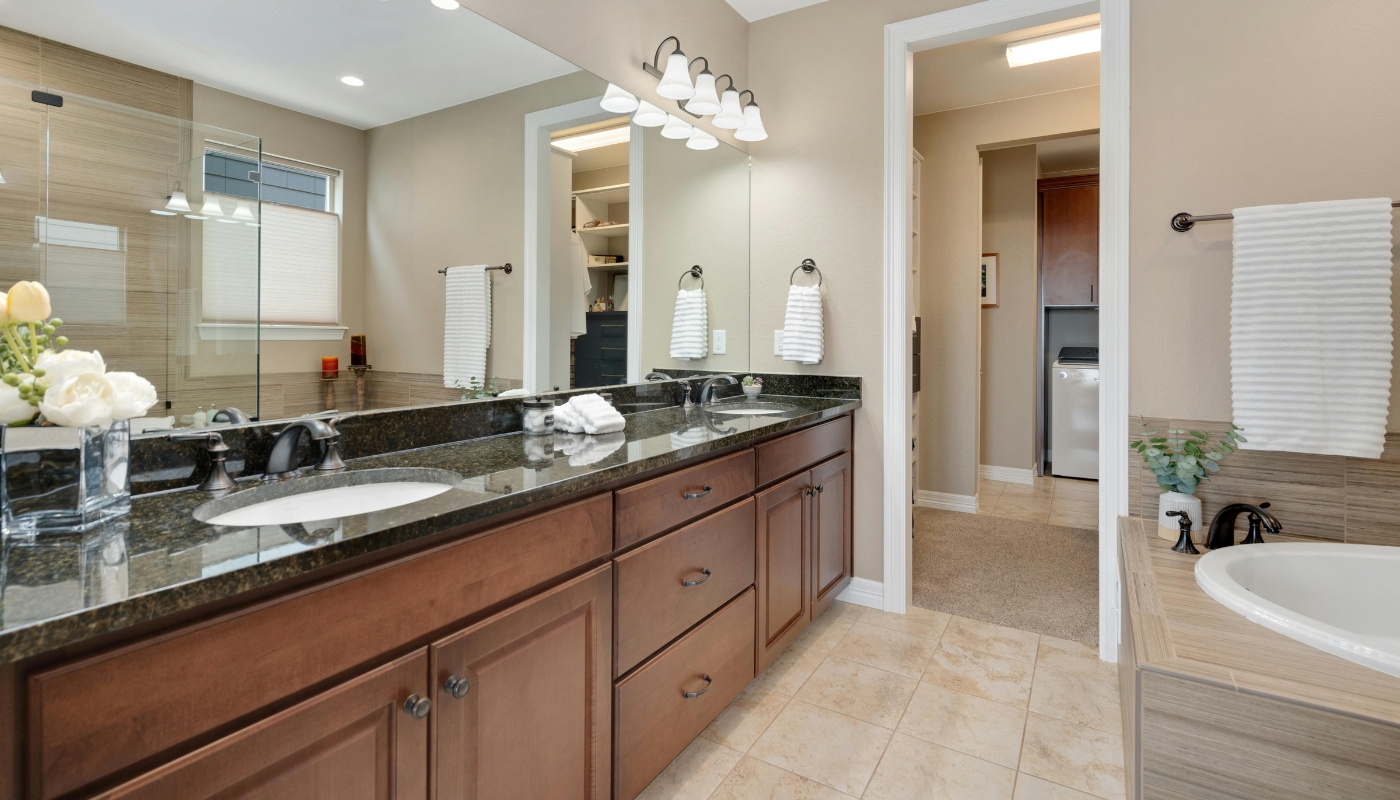
Table of Content
Introduction: Why a Classic ADU Remodel in El Dorado Hills

El Dorado Hills, CA, is a desirable region in Northern California—nestled between the Sierra foothills and the Sacramento metropolitan area. Homeowners here often seek a balance between upscale style and practical living solutions. A classic ADU remodel—where an existing structure is remodeled or expanded into a timeless, high-quality accessory dwelling unit—is a compelling option.
By choosing a classic architectural aesthetic (think balanced proportions, elegant detailing, enduring materials), your ADU can feel like a cohesive extension of the main home, not an afterthought. When done well, a classic ADU remodel in El Dorado Hills can increase property value, provide rental income, and offer flexible living space for family or guests.
In this article, we’ll walk through everything you need to know—from local permitting to design, construction, and maximizing long-term value.
Understanding ADUs & Local Context
What Is an ADU (Accessory Dwelling Unit)?
An Accessory Dwelling Unit (ADU) is a self-contained residential unit on the same lot as a primary residence. It includes kitchen, bathroom, sleeping area, and its own entrance. Sometimes called a “granny flat,” “in-law suite,” or “backyard cottage.”
In California, laws have evolved to encourage ADU construction, streamline permitting, and reduce regulatory barriers.
There is also a subtype known as a Junior ADU (JADU), usually under 500 square feet, that may share a bathroom with the primary house and has more limited requirements.
Key state-level laws have shaped the current ADU landscape in California:
-
Under these laws, many jurisdictions must allow at least an 800 square foot ADU (detached) with a 16-foot height minimum and 4-foot side/rear setbacks.
Nevertheless, local jurisdictions retain authority for design standards, utility connections, and more stringent requirements in certain zones.
Specific Rules & Guidelines for El Dorado County / El Dorado Hills
Because “El Dorado Hills” is part of El Dorado County (though may intersect with local city / unincorporated rules), you must follow both county-level ADU codes and local overlay rules. Here are key points:
-
Unincorporated El Dorado County allows detached ADUs up to 1,200 square feet for many lots.
-
On lots under 20,000 sq ft: studio/1-bedroom ADUs may be limited to ~850 sq ft; 2+ bedrooms up to ~1,000 sq ft.
-
Side & rear setbacks: minimum 4 feet (unless local fire, easement, or specific zoning demands more)
-
Height limit: typically 16 feet for detached units, unless zoning allows more.
-
Parking: 1 off-street parking space per ADU unit is usually required—unless certain exemptions apply (e.g. proximity to transit, ADU conversion, etc.).
-
Connection fees, capacity charges, and utility upgrades: ADUs must often pay their proportional share or upgrade existing systems.
-
Permitting: El Dorado County offers pre-reviewed ADU plans to speed up permitting.
-
Timeline: Planning and permitting phases may take 1–3 months; the entire project often spans 12–18 months or more.
-
Impact fees: Many jurisdictions exempt small ADUs (under 750 sq ft) from certain impact fees; larger ones may pay proportional fees.
Planning Your Classic ADU Remodel
Defining “Classic” Style in ADU Remodeling
When we say classic ADU remodeling, we imagine a unit with timeless appeal: balanced proportions, elegant trim, traditional rooflines, quality materials (e.g. wood siding, lap siding, brick accents, shingle roofs), and interiors with neutral palettes and refined detailing (crown molding, shaker-style cabinetry, wainscoting, vintage-inspired fixtures).
A classic ADU should seamlessly complement the main home, rather than clash. That often means matching architectural language (roof pitch, window style, siding) while offering subtle distinctions so it’s not a mirror copy.
Benefits of choosing a classic style:
-
Durability and enduring appeal
-
Easier to maintain and update over time
-
Better integration with neighborhood character
-
Stronger appeal to renters or buyers
During planning, gather design inspiration (Pinterest, architectural magazines, your local neighborhoods), and compile a style board to guide decisions.
Site Analysis & Feasibility
Before you commit, perform a thorough site analysis:
-
Lot survey and property lines — Confirm boundaries, easements, slope, setbacks.
-
Existing structures — Are there garages, sheds, or accessory buildings that can be converted or removed?
-
Topography, drainage & grading — Hills, fill, drainage paths, soil condition may affect foundation costs.
-
Sun orientation & views — Use for placing windows, patios, shading, passive solar design.
-
Utility access — Where are water, sewer lines, gas, power, storm drainage?
-
Circulation & access — How will tenants or occupants enter? Paths, walkways, parking, separation from main house.
-
Neighbor context & privacy — Consider sightlines, window placement, neighboring structures.
-
Zoning constraints — Check whether your lot is in a special overlay (historic, hillside, flood zone) or has additional design restrictions.
At this stage, it’s also wise to run a rough feasibility check: can you physically build the maximum allowed footprint? Will utilities support it? Are setbacks too restrictive?
Budgeting & Cost Estimates
A solid budget sets realistic expectations. Key cost components include:
-
Design & architectural fees
-
Permitting, engineering & consultant fees
-
Site preparation (grading, demolition, excavation)
-
Foundation & structural work
-
Framing, roofing, siding, windows
-
Mechanical, electrical, plumbing (MEP)
-
Insulation, drywall, finishes
-
Interior fixtures (kitchen, bathrooms)
-
Flooring, cabinetry, countertops
-
Landscaping, paths, exterior lighting
-
Utility upgrades / connection fees / capacity charges
-
Contingency (always include 10–20%)
The Design Process
Floor Plans, Layout & Circulation
Designing a functional ADU starts with efficient layouts and smart circulation. Some design strategies to consider:
-
Compact footprint with efficient flows — Minimize wasted corridors; optimize open plan where possible.
-
Multi-use space — Allow rooms to flex (e.g. guest + office, studio + living).
-
Separation between units — Maintain privacy for both ADU and main home (sound insulation, separate entries).
-
Orientation & daylighting — Maximize natural light via window placement; avoid west-facing heat gain.
-
Outdoor relationships — Provide patios, decks, or garden courtyards adjacent to living rooms.
-
Bathroom & kitchen placement — Stack where possible with main house to reduce plumbing extension costs.
-
Storage — Include built-in closets, storage nooks, overhead storage; efficient use in small space is crucial.
Typical arrangements include 1-bedroom + 1-bath, studio units, or 2-bedroom versions (if allowed).
Façade, Materials & Architectural Details
The exterior look is key to achieving a classic aesthetic. Consider:
-
Matching roof pitch, gutters, overhangs of main house
-
Symmetrical window arrangements or balanced composition
-
Window trim, shutters, muntins (divided lites)
-
Exterior siding (lap siding, shiplap, vertical boards, board + batten)
-
Brick or stone accents, pilasters, quoins
-
Covered porch, trellis, or small front stoop
-
Gable, shed dormers, or classic roof forms
-
Roof material (composition shingles, clay tile, metal accent)
-
Eaves, fascia, soffits, cornice detailing, crown molding
-
Exterior lighting (wall lanterns, sconces) and pathway lighting
A well-detailed façade will help ensure your ADU feels integrated, timeless, and high quality.
Interior Design, Finishes & Fixtures
Inside, the goal is to combine elegance with functionality. Suggestions:
-
Neutral, calm color palettes (creams, beiges, soft grays)
-
Mid-tone wood or painted cabinetry in shaker or raised-panel styles
-
Quality hardware (brass, nickel, matte black)
-
Natural stone or quartz countertops
-
Classic tile patterns (subway tile, herringbone, hexagon)
-
Consistent flooring (hardwood, engineered wood, tile)
-
Crown molding, wainscoting, baseboards
-
Built-in shelving or niches
-
Good lighting plan: ambient, task, accent
-
Windows & doors with trim, transoms or sidelights where possible
-
Future-proof features: conduit for wiring, smart home readiness
Permitting & Regulatory Compliance
Pre-review & Expedited ADU Plans
El Dorado County offers pre-reviewed ADU building plans that comply with California and local building standards, to accelerate approvals. If you use one of these, you’ll still need to tailor some site-specific elements (solar design, sprinklers, etc.).
Using a pre-reviewed plan may reduce the back-and-forth during permit review, saving time and cost.
Submittal, Review & Approval Timeline
Typical steps and timelines include:
-
Preparation of full permit set (site plan, floor plans, elevations, structural, MEP)
-
Submit to county planning & building departments
-
Staff review (60-day ministerial decision standard for complete ADU applications)
-
Corrections / revisions as required by review
-
Permit issuance
-
Inspections during construction
-
Final inspection and certificate of occupancy
Some jurisdictions may require design review, neighborhood notifications, or architectural review.
The 60-day rule: per state law, building permits for ADUs should be approved within 60 days of a complete application in many jurisdictions.
Utility Connections, Impact Fees & Covenants
-
Utility fees: Although many ADUs are exempt from certain fees below thresholds, ADUs above certain sizes or thresholds may incur connection or capacity charges.
-
Separate meters: Some jurisdictions require or recommend separate meters for water, sewer, or gas to measure usage independently.
-
Deed restrictions / covenant: You may need to record restrictions preventing short-term rentals and clarifying that the ADU cannot be sold separately.
-
Impact fees: ADUs under 750 sq ft are often exempt from impact fees; larger ones may pay proportional fees.
-
HOA / CC&Rs: If your lot is subject to HOA rules, ensure your design meets any aesthetic or setback restrictions (they can’t legally prohibit ADUs, but can enforce design compatibility).
Construction & Remodeling Phases
Demolition, Framing & Structural Work
-
Begin with site clearing, demolition of non-essential structures, removal of debris
-
Excavate and pour foundation (slab, crawl space, or pier & beam depending on site)
-
Framing: floor joists, wall studs, roof trusses or rafters
-
Sheathing, bracing & structural connections
-
Roof framing and sheathing
Be particularly careful with tie-ins to existing structures (if converting or attaching) to maintain structural integrity and maintain code compliance.
Roofing, Siding & Exterior Envelope
-
Install roofing underlayment, flashing, vents, shingles or other roof cover
-
Install siding, trim, fascia, soffits
-
Exterior sheathing, moisture barrier, house wrap
-
Window and door installation with proper flashing
-
Sealants, caulking, trim work
Ensure all exterior elements are weathertight before proceeding with interior work.
MEP (Mechanical, Electrical, Plumbing)
-
Rough-in plumbing: water supply, drain, vent, gas lines
-
Electrical: main panel or subpanel, wiring, outlets, lighting circuits
-
HVAC: ductwork or mini-split systems, HVAC units, ventilation
-
Utility tie-ins (water, sewer, gas, power)
-
Inspections for rough plumbing, electrical grounding, mechanical
Insulation, Drywall, Finishes
-
Install insulation to meet code (walls, ceiling, possibly floors)
-
Vapor barriers, sound insulation between ADU & main house
-
Hang drywall, tape, prime, finish
-
Interior door installation, trim, casing, baseboards
-
Paint or wall finish
Flooring, Cabinetry & Built-ins
-
Install flooring (hardwood, tile, laminate, etc.)
-
Install cabinets, built-ins, closets
-
Countertops, backsplash
-
Bathroom fixtures (toilet, lavatory, shower/tub)
-
Lighting fixtures, plumbing fixtures
-
Appliance hookups
Final Inspections & Occupancy
-
Final inspections by building, plumbing, electrical, mechanical departments
-
Address punch-list items
-
Certificate of Occupancy (CO) issuance
-
Utility onboarding (meter activation, water, gas, etc.)
-
Final walkthrough with client
Once complete, the ADU becomes legally habitable, and you or your tenant may move in.
Value, Benefits & Use Cases
Increased Property Value
A well-executed ADU typically increases the overall value of your property. Real estate agents often cite 20%–30% incremental value (varies by market and unit quality). A high-quality classic ADU can command premium appeal.
Rental Income & Supplemental Revenue
You can lease your ADU long-term (30+ days). Short-term rentals (Airbnb-style) may be subject to restrictions, and many jurisdictions prohibit them for ADUs.
Depending on size, location, finishes, and market, the rental income can help offset mortgage, utility, or maintenance costs.
Multigenerational / Guest Housing
ADUs are ideal for housing aging parents, adult children, guests, or caretakers—offering privacy while maintaining proximity. The classic design aesthetic makes the space feel welcoming and comfortable.
Home Office, Studio, or Flex Space
If not rented, some homeowners use ADUs as remote offices, art studios, home gyms, or creative spaces. This flexibility increases utility without sacrificing livable square footage of the main house.
Challenges & Considerations
Site Constraints & Setbacks
Some lots may be too small, narrow, sloped, or have restrictive setbacks that limit the buildable envelope. In those cases, you may need variances or creative design solutions.
Utility Capacity & Septic / Water Issues
If your lot is not connected to a municipal sewer, you may need to expand the capacity of your septic system, or add a new one. Similarly, well systems may require testing for capacity.
Upgrading main electrical panels or service lines to support additional load may also be necessary.
Neighborhood Compatibility & HOA Guidelines
Although state law prevents HOAs from outright banning ADUs, they can impose design standards, setbacks, and architectural compatibility rules. Engage your HOA early.
Also, maintain positive relations with neighbors, minimize visual impacts, preserve privacy, and manage construction impacts (noise, parking, staging).
Cost Overruns, Delays & Risk Mitigation
Unexpected issues—like poor soils, hidden structural problems, permitting delays, or material price increases—can raise costs. Mitigation strategies:
-
Contingency budget (10–20% or more)
-
Thorough site investigation & soil testing
-
Early utility consultations
-
Use of pre-approved plans when possible
-
Strong contract terms with your builder
-
Phased or modular construction options
A classic ADU remodel in El Dorado Hills offers an exceptional pathway to enhance your property, support family needs, and generate income—while preserving timeless appeal and architectural integrity.
At Remodel California, we bring decades of remodeling and new construction expertise and intimately understand California ADU codes and permits. From concept to occupancy, we guide you through design, approvals, construction, and final delivery.
Ready to get started?
Resources & Links
-
El Dorado County – ADU Building Division: [County ADU page] (https://www.eldoradocounty.ca.gov/Land-Use/Planning-and-Building/Building-Division/ADU) eldoradocounty.ca.gov
-
El Dorado Jumpstart ADU Program: [Learn the Rules & Get Started] (https://eldoradoadu.org) El Dorado Jumpstart ADU+1
